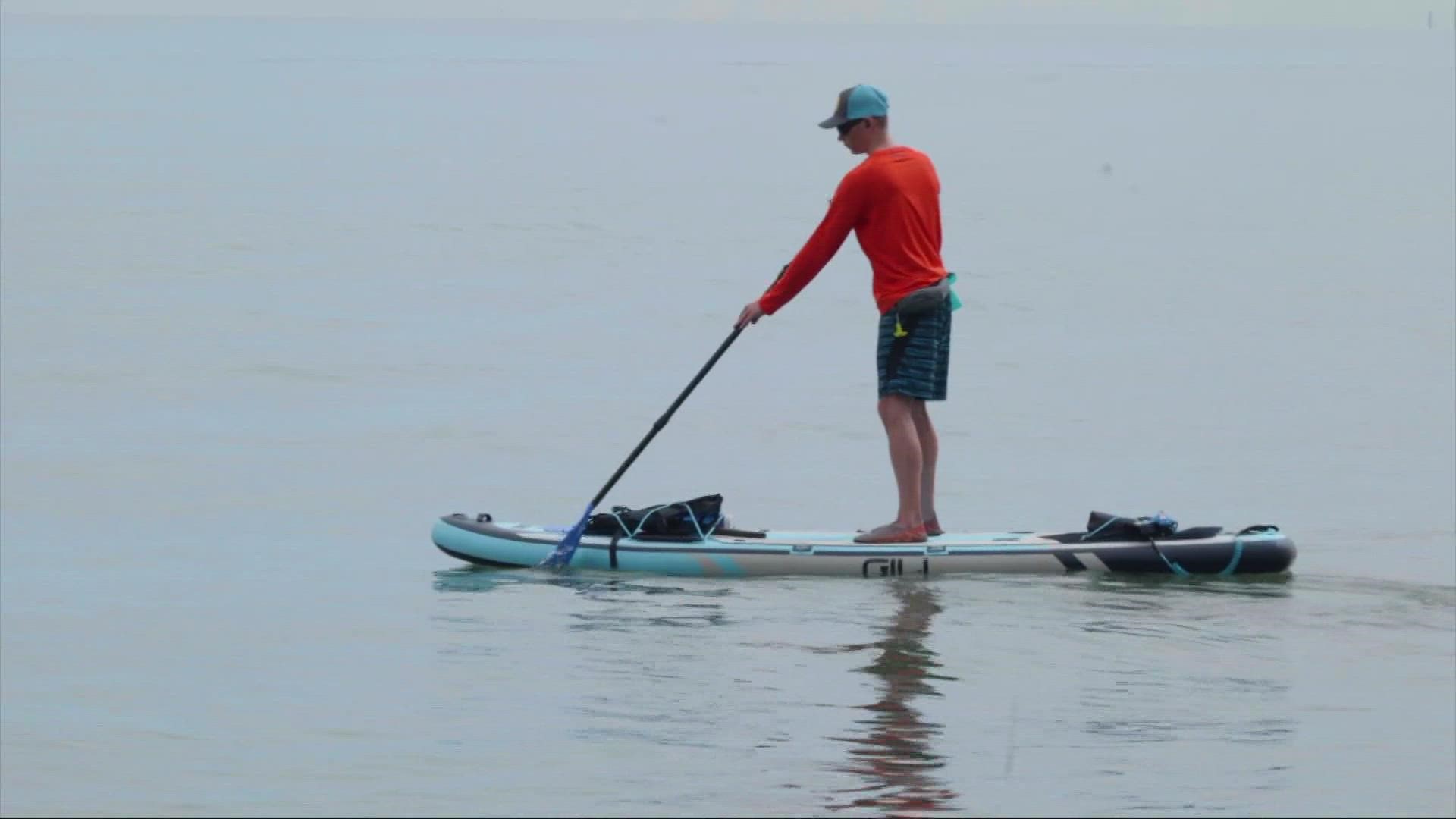CLEVELAND — How do you make Lake Erie “smart”? The Cleveland Water Alliance (CWA) set out to do just that.
Inspired by smart cities where you can get real-time traffic updates or find a parking space on your phone, they wondered… 'what could the lake tell us?'
Now, the CWA is impacting public health and safety while attracting good-paying jobs to Cleveland. They are diving into the water economy.
The sound of waves breaking on the shore calls many to grab a paddle or fishing rod and enjoy Lake Erie. But others hear opportunities in the fast-growing job sector of the water economy.
"It is growing more quickly than advanced manufacturing, then additive manufacturing, than biotechnology," said Bryan Stubbs, the President and Executive Director of the Cleveland Water Alliance.
This summer, a network of smart buoys went to work in Lake Erie. They are floating laboratories, collecting real-time information and sending it to shore, allowing for swift decisions on water management and quality monitoring.
"A lot of these buoys allow trial of new innovations and new technologies worldwide here in Cleveland,” said Stubbs. “In fact, right now, we have 71 companies in our pipeline from Europe that want to come to Cleveland and trial their new technologies in our test bed."
The Cleveland Water Alliance is working with partners to make Lake Erie and its watershed one of the world's most connected and studied fresh bodies of water.
All along Ohio's lakeshore.
"We are trying to have just a minimum number of buoys, one per county, that going to be able to tell boaters and others what are the conditions offshore," said Ed Verhamme, President of Freeboard Technology, one of the companies working with the CWA.
The information collected is not just for recreation. The National Weather Service, Ohio Department of Natural Resources and U.S. Coast Guard are all watching the data. Private sector businesses are also intrigued.
"It's just the ability to obtain better data," remarks Andrew Luessenhop, the Great Lakes Regional Sales Manage with In-Situ.
In-Situ designs, manufactures and sells water monitoring sensors worldwide. Several of their sensors are on the test bed buoys. The results they get will go into building better sensors.
"Being able to see what is happening in real-time can allow you to respond that are taking place as they unfold," said Luessenhop.
In Northeast Ohio, we are already seeing the benefits.
French company BiOceanOr used the test bed, developing a warning system for hypoxia, or oxygen-starved water. It was a concern for Cleveland Water but now buoys sound the alarm hours ahead of time.
“Very valuable. We couldn't have gotten this information any other way," remarked Scott Moegling, Water Quality Manage for Cleveland Water.
In 2014, harmful algal blooms contaminated Toledo’s drinking water. Cleveland Water Alliance has a network of buoys being utilized by companies worldwide, like In-Situ and BiOceanOr, to develop early warning systems for future harmful algal blooms.
A telecommunications network is the newest addition to the Lake Erie test bed, placing high-tech radios on towers, rooftops and even on the steamship Mather.
"This new telecommunication network is specifically focused on covering the offshore waters of Lake Erie,” said Vehamme. “So, it is a lower cost way to cover a very large area."
Before, each sensor needed its own cellular network connection. Now one radio can handle thousands of sensors, driving down cost, making Cleveland's Water Economy even more attractive.
"Certainly, seeing the role Cleveland Water Alliance is paying in all of this is vital,” states Luessenhop. “Seeing major investments being made build infostructure that will be resistant to climate change and population growth."
Stubbs says it charts a path for new products, companies, and good-paying jobs in Cleveland, for decades to come.
"We need to be betting on the water economy now because we can be competitive, and we can control a decent chunk of that," stated Stubbs.

